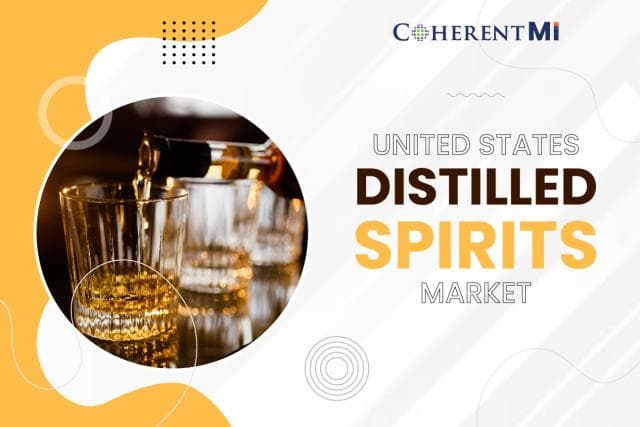Origins and Early Production
Distilling spirits has deep roots in the United States dating back to the colonial era. Some of the earliest European settlers brought distilling techniques from their home countries and began producing grain-based alcoholic beverages like whiskeys and brandies. Early American settlers often distilled spirits as a way to preserve and extract value from agricultural excess. One of the first commercial distilleries in the American colonies was established in 1619 in Virginia. Throughout the 1700s, small farm distilleries sprang up across the colonies, particularly in the Appalachian region, as whiskey became an important local commodity and trade good.
Rise of American Whiskey
By the late 1700s and early 1800s, American whiskey had emerged as one of the most widely produced and consumed distilled spirits in the new nation. The Appalachian region, centered around Kentucky and Tennessee, became known globally for its fine bourbon and rye whiskeys. Major commercial distilleries in Bourbon County, Kentucky helped establish the bourbon style and give the region international recognition. Meanwhile, rye whiskey was more commonly associated with Pennsylvania and Maryland. American whiskey boomed in the 1800s, even surpassing rum as the most popular distilled spirit by the mid-century. Exports expanded significantly to markets in Europe, South America, and beyond.
Evolution of Distilling Regulations
As distilling grew into a large-scale industry, debates emerged around regulating alcohol production and trade. In the late 1700s and early 1800s, some states and localities enacted taxes or bans on distilled spirits in response to concerns over public health and morality. The first federal alcohol tax was established in 1791 to help fund the new government. However, widespread evasion of these taxes led to the Whiskey Rebellion in western Pennsylvania in the 1790s as farmers protested the duties. Over the 1800s, regulations evolved at both federal and state levels to curb perceived social ills while generating tax revenue. A series of "local option" laws in the late 1800s allowed counties to decide their own prohibition status. National Prohibition was enacted from 1920 to 1933 but had many unintended consequences.
Post-Prohibition Growth and Innovation
With the repeal of Prohibition in 1933, America's distilling industry began a new phase of expansion and innovation. Major companies like Jack Daniel's and Jim Beam invested heavily in brand marketing and national distribution networks. They helped popularize bourbon and Tennessee whiskey as quintessential American styles. Other styles like blended whiskey also gained traction. Meanwhile, large-scale grain neutral spirit production helped fuel the mixers market, as brands like Smirnoff and Gordon's saw opportunities. In the post-World War II era, many famous classic cocktails reunited spirits with consumers. Simultaneously, new styles emerged like blended Canadian whisky and flavored varieties. Innovative micro-distilleries proliferated in the late 1900s, reinventing tradition with artisanal techniques.
Today's Domestic Scenes
While American whiskey maintains a loyal following, the modern era has seen growing consumer interest in diverse distilled spirits categories beyond brown spirits alone. The craft distilling renaissance has brought more complexity to scenes across spirits types. Bourbon and American whiskey still lead both in dollars and volume consumed domestically. Tennessee whiskey and rye have experienced notable revivals as well. Vodka remains popular for cocktails, as do gins and white rums. Quality tequilas and mezcals have found new fans as tastes evolve. Flavored and infused varieties continue diversifying consumer options. Meanwhile, locally-made craft spirits highlight regional tastes and traditions. Overall, while deeply rooted in heritage, America's distilling culture remains fluid and open to new innovations.
Globalization and Exports
As the U.S. distilling business has grown more sophisticated over generations, involvement in globalization has also expanded markets. American whiskey sees the largest exports by far. Leading brands ship mass volumes to huge growth markets like Europe, Australia, and Asia. In some cases, iconic categories have become synonymous with "American" tastes and lifestyles abroad. For instance, bourbon is experiencing a "brand USA" moment in Japan. Exports allow major firms to offset tariffs or saturation at home. However, retaliatory foreign tariffs have more recently damaged certain exports. Still, craft distillers try serving international pallets eager for regional flavours, gaining clout through competitions and trends. Overall, globalization remains crucial for American spirits as domestic competition mounts.
Latest Developments and Future Outlook
Today's distilled spirits market shows increasing consolidation among big firms but also faster growth of independent companies. Bourbon and American whiskey recently hit all-time production highs to feed expanding global cravings. But premiumization also continues, as quality super-premium and ultra-premium offerings target more discerning drinkers. Mid-sized regional distillers bolster diverse local spirits scenes nationwide. Meanwhile, sustainability has become a bigger concern, as energy usage and water impact come under scrutiny. Technological innovation promises advances in efficiency and consistency. Looking ahead, industry forecasts predict ongoing opportunities from growing global middle classes and evolving consumer preferences for local, artisanal, and sustainably-produced spirits. Both tradition and experimentation will likely define the future directions of American distilling.
